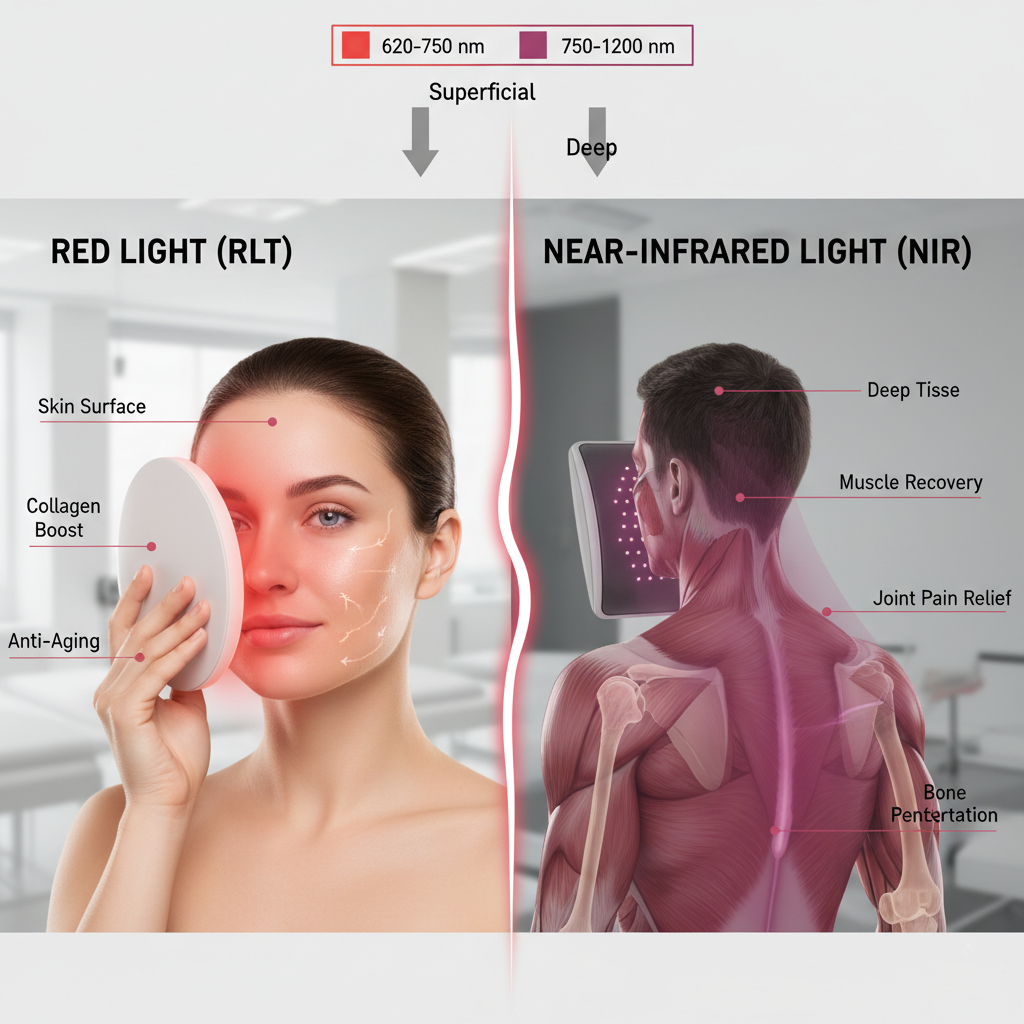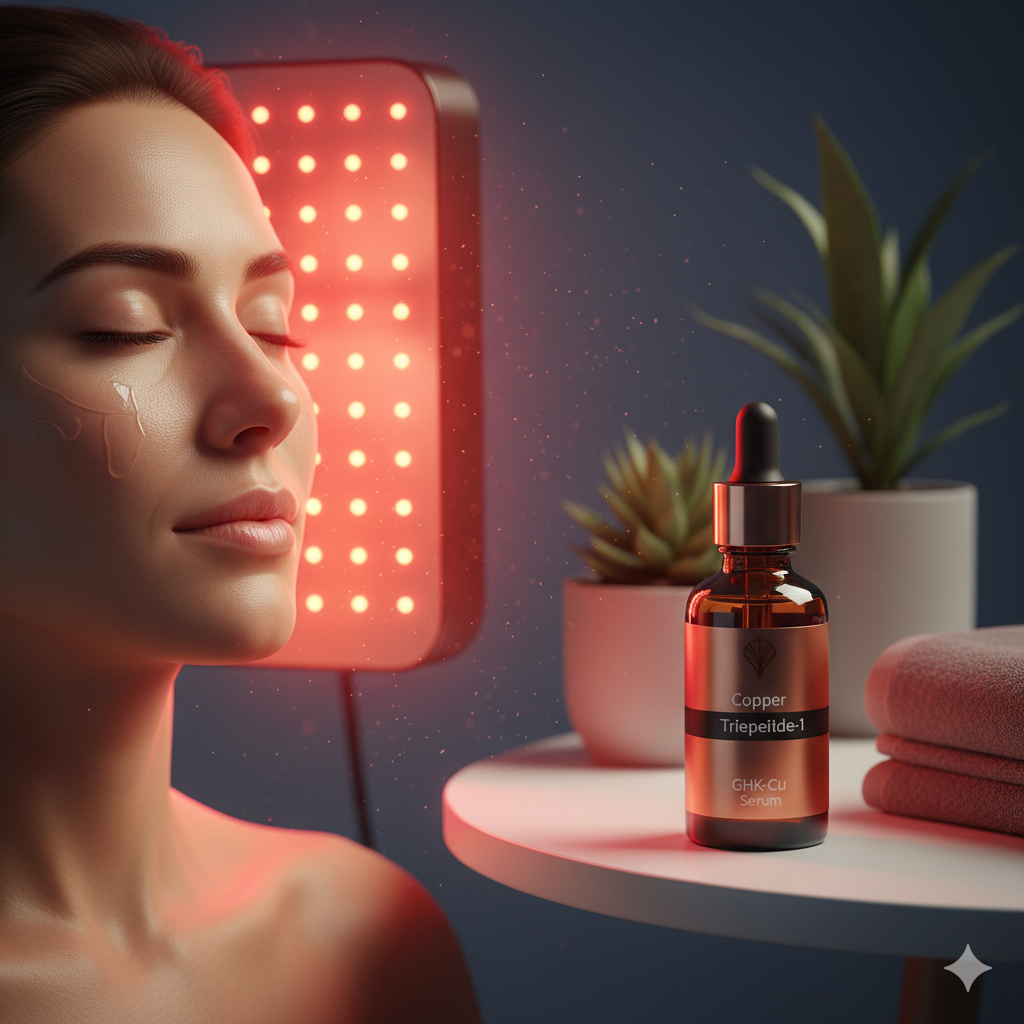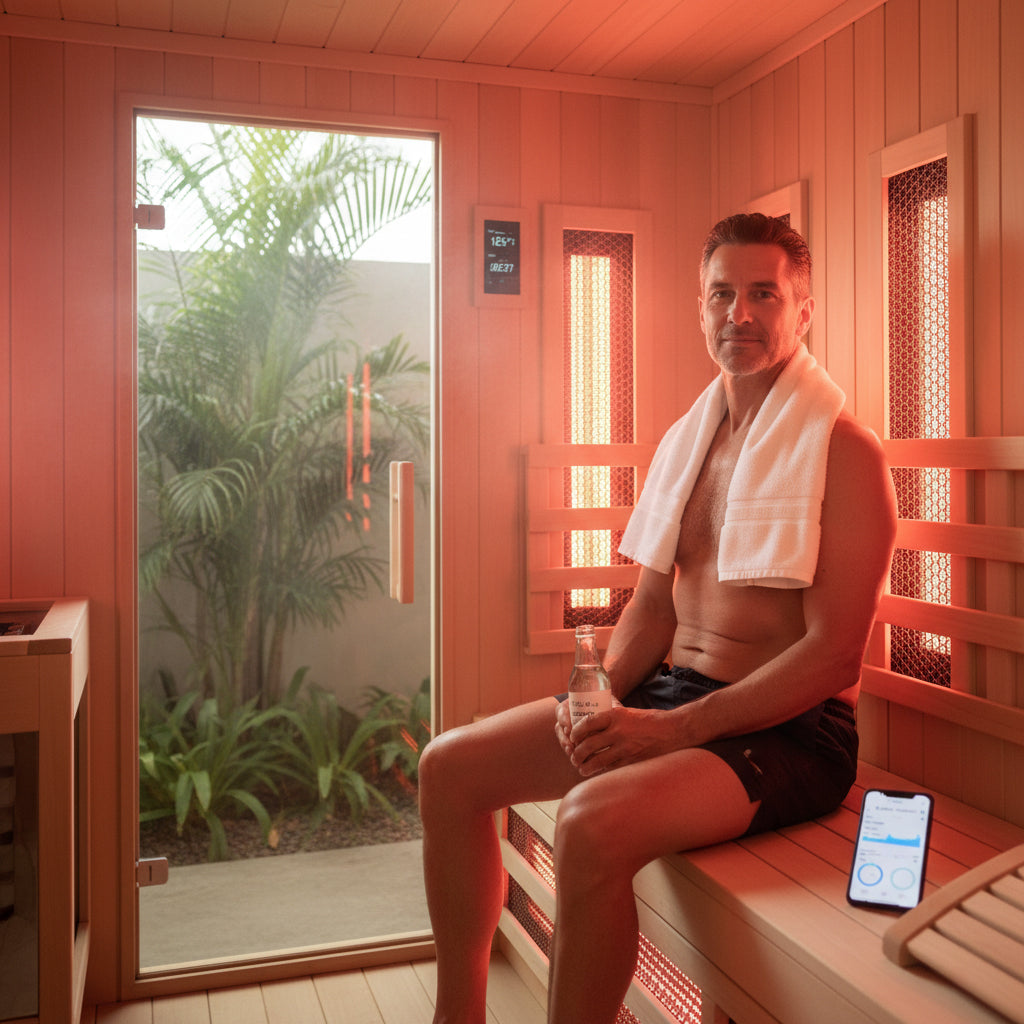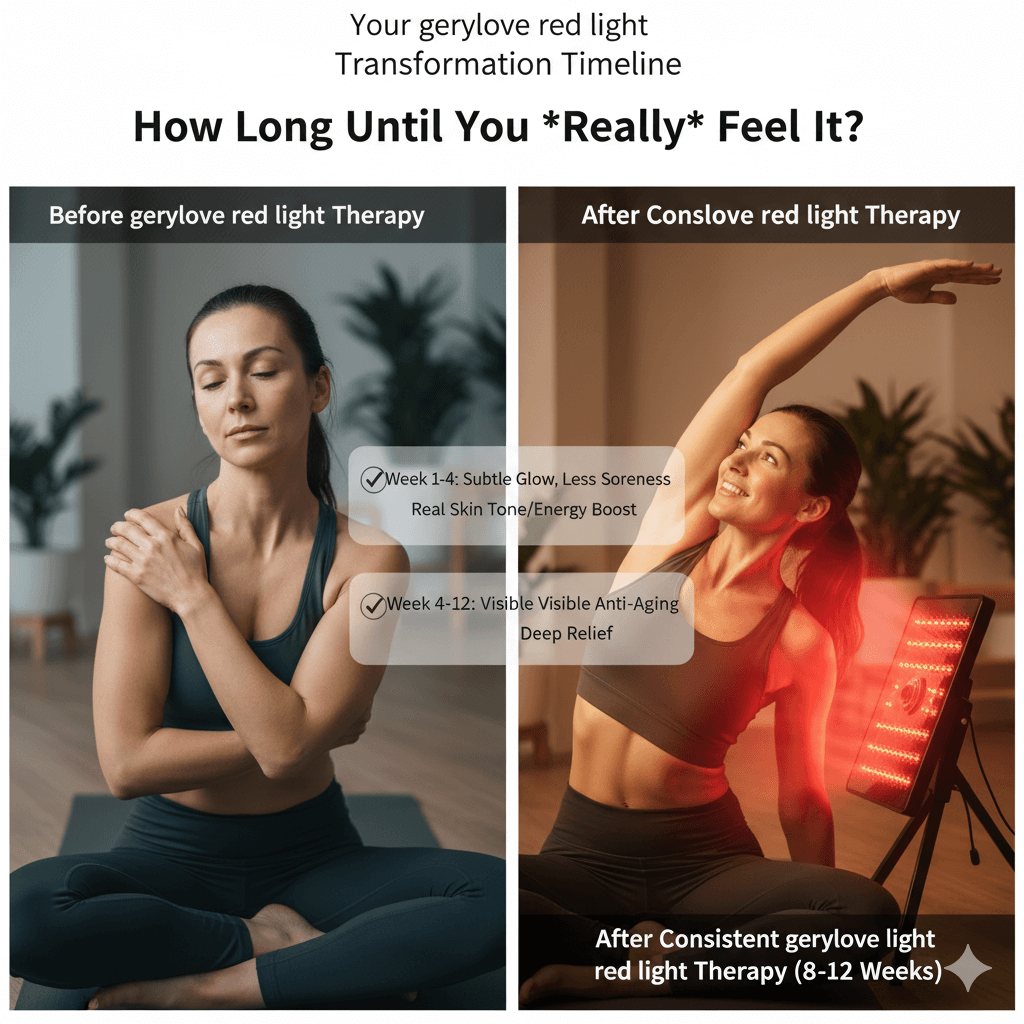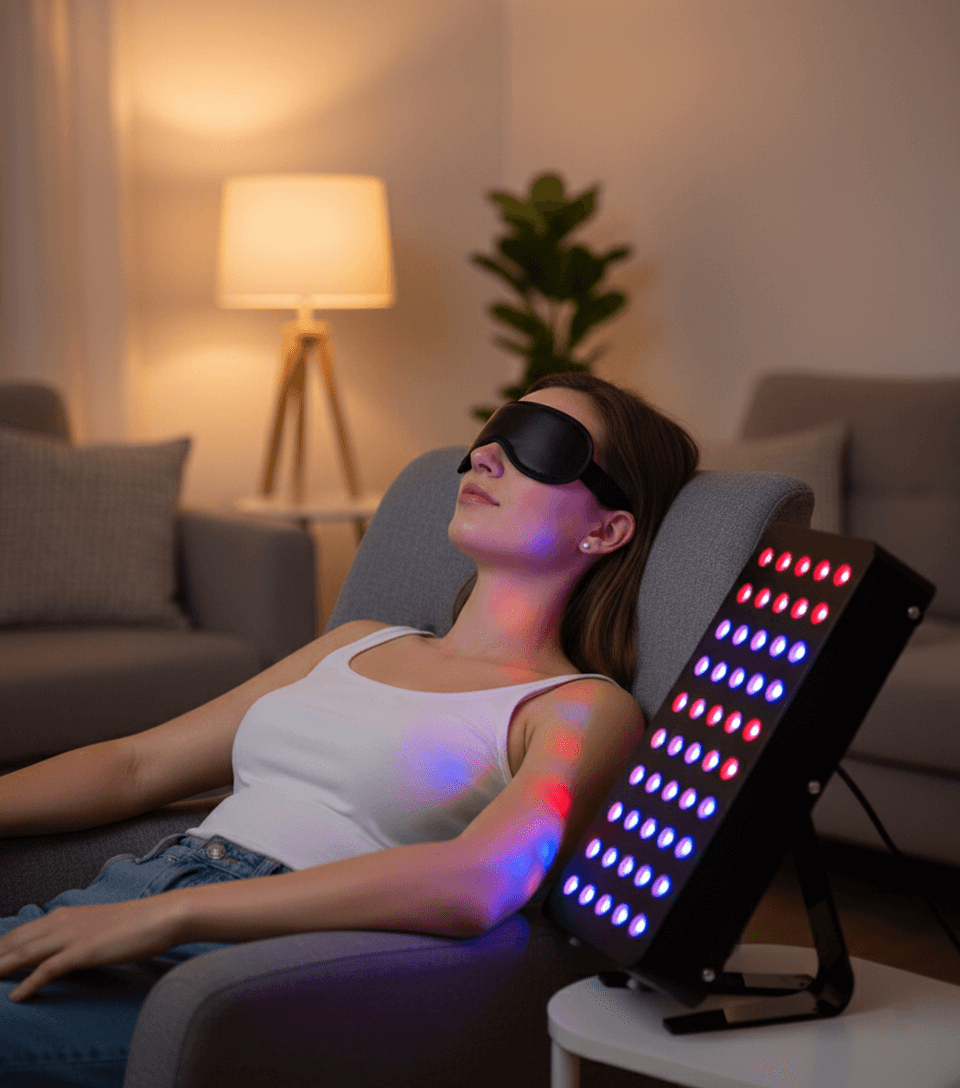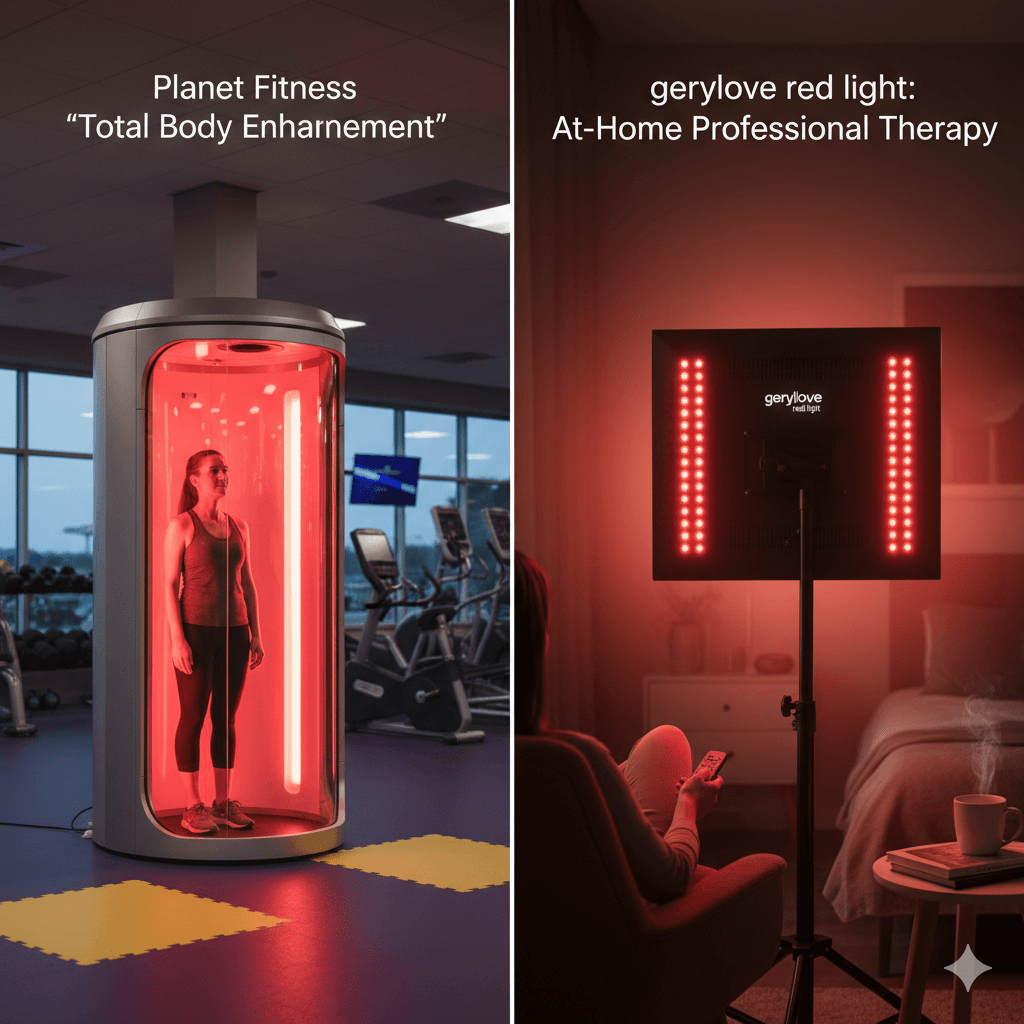Red Light vs. Near-Infrared (NIR) Light Therapy: Your Guide to Photobiomodulation
Light therapy, a non-invasive treatment rooted in the science of Photobiomodulation (PBM), is rapidly emerging as a foundational tool in wellness. PBM utilizes specific light wavelengths to stimulate biological processes, enhancing cellular function and promoting healing without causing harm. Two popular and highly effective types are Red Light Therapy (RLT) and Near-Infrared Light Therapy (NIR). Understanding the distinct properties and applications of each is crucial for selecting the right treatment to meet your health goals.

Understanding the Science: The Power of Wavelengths
Both Red and NIR light therapies work by penetrating the skin and interacting with the mitochondria (the "powerhouses" of your cells). This interaction enhances the production of Adenosine Triphosphate (ATP), which is the essential energy currency for cellular repair, recovery, and function. The key differentiator between the two light types is the wavelength, which directly determines the depth of penetration.
| Feature | Red Light (RLT) | Near-Infrared Light (NIR) |
| Wavelength Range | 620–750 nanometers (nm) | 750–1200 nanometers (nm) |
| Penetration Depth | Superficial (primarily skin layers) | Deep (reaches muscles, joints, bones, and even the brain) |
| Primary Target | Skin, Collagen, Surface Wounds | Deep Tissue, Muscle, Joint Pain, Circulation |
| Best For | Anti-Aging, Acne, Fine Lines, Wound Healing | Muscle Recovery, Pain Relief, Joint Health, Cognitive Support |
Red Light Therapy (RLT): Focus on Surface Rejuvenation
RLT utilizes the shorter wavelengths (620–750 nm) which are highly absorbed by chromophores in the top layers of the skin. This concentrated action makes Red Light the superior choice for dermatological and surface-level benefits.
Key Benefits of Red Light
-
Accelerated Skin Rejuvenation: RLT is celebrated for its ability to stimulate collagen and elastin production in the dermis. This process smooths skin texture, reduces the appearance of wrinkles and fine lines, and improves overall elasticity.
-
New Data: Research suggests that 660nm light can boost fibroblast activity by over 50%, leading to measurable anti-aging results within 8-12 weeks. [A]
-
-
Enhanced Healing and Circulation: RLT accelerates the tissue repair process for surface-level wounds, burns, and post-procedure recovery, often resulting in faster healing and reduced scarring. It also boosts circulation in the skin, delivering more oxygen and nutrients to cells for a healthier glow.
-
Acne and Inflammation Management: Its anti-inflammatory properties are effective in treating acne and other inflammatory skin conditions like rosacea, by calming irritated tissues and reducing redness.
Near-Infrared (NIR) Light Therapy: Deep Tissue Power and Pain Relief
NIR light employs longer wavelengths (750–1200 nm) that bypass the skin's surface and penetrate deeply into the body. This deep reach is why NIR is favored in sports medicine, physical therapy, and for chronic pain management.
Key Benefits of Near-Infrared Light
-
Profound Muscle Recovery and Pain Relief: By reaching muscles, tendons, and joints, NIR therapy significantly enhances muscle recovery after intense physical activity. It reduces pain and stiffness associated with chronic conditions like arthritis by decreasing deep-seated inflammation.
-
New Data: A meta-analysis focusing on athletic performance showed that pre-conditioning muscles with NIR light (810–850 nm) could reduce muscle fatigue by 15% to 20% and improve power output. [B]
-
-
Support for Joint Health and Mobility: The deeper penetration can directly benefit joints and cartilage, alleviating symptoms of arthritis and promoting greater flexibility and mobility.
-
Potential Cognitive and Brain Health Benefits: Emerging research is exploring the use of transcranial NIR therapy (applied through the skull) to enhance cognitive function, suggesting potential benefits for memory, mood, and neuroprotection by increasing neural activity. [C]
Optimizing Your Treatment: Combining Red and NIR Light
While each light type has its specialty, the most comprehensive benefits are often achieved by using devices that combine both Red Light and Near-Infrared Light.
-
The Synergistic Advantage: Using both RLT and NIR simultaneously allows you to target the body on two levels: RLT handles the surface-level skin rejuvenation, while NIR addresses deeper pain, inflammation, and recovery in muscles and joints. This combination provides holistic health improvements, from skin appearance to internal tissue health.
-
Targeted Application Example: For a full-body workout recovery session, apply NIR to the large muscle groups and joints for deep relief, and use RLT on the face and neck for anti-aging and skin vitality.
For best practices and device selection, Gerylove Red Light Therapy devices are your best choice.
Light therapy is non-invasive and safe for regular use, as both RLT and NIR do not contain harmful UV rays. To ensure effective and safe results, follow these guidelines:
-
Determine your primary goal: Are you focused on (RLT) anti-aging and improving skin texture? Or do you need (NIR) deep pain relief and muscle recovery? This determines the required wavelength range.
-
Device Specifications Matter: Look for high-quality LED light therapy devices that specify their wavelength range (e.g., 660nm for Red, 850nm for NIR) and output irradiance (power density, measured in mW/cm²). Higher irradiance typically means shorter, more effective sessions. Gerylove Red Light devices have 10 wavelengths and industry leading irradiance. The abundance of wavelengths means you will simultaneously obtain a variety of different effects, greatly improving your irradiation efficiency.
-
Consistency is Key: Like exercise, the benefits of PBM are cumulative. Aim for regular sessions (e.g., 3–5 times per week) to see significant, lasting results.
References for New Data:


